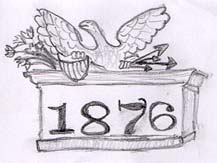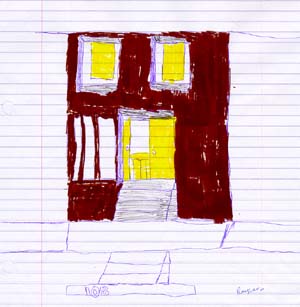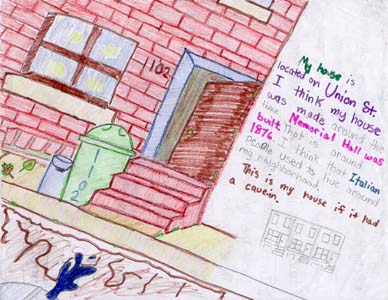
|

|
|
|
Parkside Avenue
|
A Sunny Day
By Fatima Williams
You are
Hoping for a light rain or showers,
And the sun to grow all the flowers.
On the path through a sunny day.
The dazzling sun shining high.
The clouds are going away, saying goodbye.
But a harsh storm here and there,
Then you look for the sunshine in the air.
You are waiting for the sun, so the kids can play.
Then you have your joy on a sunny day. |
|

|
Memorial Hall
By Natasha Clark
Memorial Hall was design for the Centenial Exhibition of 1876. Designed by Herman J. Schwarzmann, a Philadelphia first permanent art gallery, contemporary accounts describe Memorial Hall as being "the Modern Renaissance style". The Architectural historian of today would probably interpret this to mean the art of France, as then taught by the influential Ecole des Beaux Arts. It remained the museum until the completion of the Philadelphia Museum of Art at Fairmount. It is the only remaining major building from the Centenial Exhibition. A scale model of the entire Centenial Grounds is on Public display in the basement. |
|

|
1876 Centenial Exhibition
By Natasha Clarke
The Centenial Exhibition of 1876 spurred rapid changes. More than two hundred buildings sprang up on the Parklands north of the zoo, in time for a national celebration that losted a brief 6 months and attracted nearly 10 million visitors, quater of the population of the country at the time. Another legacy of the Centenial is Memorial Hall, the only building that was intended to remain. |
|

|
Blocks w/Porches
By Rasean Frazier
This kind of block, usually has rowhouses with porches. They usually have a few steps above the sidewalk. They are usually one way streets. With one lane for parking and one for driving. There are backyards but no front yards, and the back yards are small. The porches are usually nice to sit and play on. You can sit on them when you get tired, instead of going inside. People can watch you while being outside.
In West Philadelphia, this type of block is usually on small streets. Mostly in Mill Creek, Belmont, and Montau. Sometimes whole neighborhoods are made of row houses with porches. Sometimes they do even have small front yards. They match the majority of the blocks north of Market Street and in the neighborhood around Cobbs Creek |
|

|
Rowhouse
By Fatima Williams
Union Street is a street of rowhouses with steps. My house is on a narrow block with one-way traffic. My block has total of 25 houses. It would be 26 but we have a lot Where a house used to stand.
On my street, everyone is pretty much in everyone else business. We play double dutch and other games in the street. Since we live on a small block, cars run down to our block very fast; not caring about what or who they might hit.
If new people came to block, it is very easy to become friendly and Become a part of the block. But for some people, it is very hard Because they might not like the style of block.
I happen to know the block very well because I've lived on it since 1993. I've seen people come and go, but to me the block has practically stayed the same. |
|

|
Mill Creek
By Amanda Keith and Dominique Gibson
From Parkside's beginning as a small buffer against industrialization to its expansion into a unique preserve for nature, art and recreation. Fairmount Park now fulfills the originality that established it. Its beauty, and serviceability are a tribute to the citizens.
During 1867, for example, the fairmount park commission formed and extended the bark to the Schuylkill River's westside. In 1872, Philadelphia opened the country's very first zoo, on land just north of Girard Ave. on Schuylkills west bank. And in 1876 Philadelphia opened its centenial exposition, located just within the western boundaries of Fairmount Park in West Philadelphia. |
|
Good Intent Mill
By Tylia Weaver
Good intent mill was opened in 1854
and it worked with steam power, one building that we built
from1806, they suggested that it took over for a long time
operation. They say it ,might of been a site from the 18th
century of a save mill. Philadelphia had greater numbers of textile
factories than any city in the World
The factories were within the school District. They were
all manufactures of cottons or wool fabric. The good intent
mill was found at market St. near 48th St.
In 1867-1877, the tenant included cotton and wool. The complex
had two three stories wing and various ofspecial buildings for
spinning, drying, then finishing.
In 1877, factories employed 41 hands including 16 men, 9 boys,
and 19 girls. 6 Years later, there were 100 hand working in 3
separated tenants
|
Back to Tours
|
|
|







|
|

|

